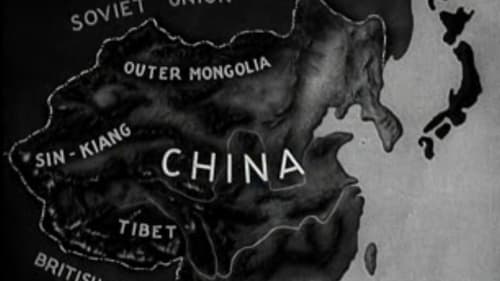Big Bang Big Boom (2010)
장르 : 애니메이션
상영시간 : 10분
연출 : Blu
시놉시스
Bold and innovative animation takes drawing into the real world.

A short film about a dirigible.

Director Joseph Cornell evokes the nostalgia of childhood by filming a children's party.

With a similar dreamy mood like its predecessor "Take the 5:10 to Dreamland" (1976) this clip starts with a boy getting into his bed. The camera zooms in into the boy's mind and a slow, sad waltz (i.e."Valse Triste") accompanies images of a locomotive, a miner, the globe, the sky, a sheep heard, etc. Disparate elements, but if one concentrates only at the movement of the figures, one can perceive a commotion, slowly livening up: The starting wheels of the heavy locomotive, the tired miner pushing the heavy cart of coal bricks, the globe smoothly turning around and around, the clouds imperceptibly floating in the sky, the sheep idly moving in the herd, etc. We reach the first climax when a mannequin opens her coat like a flower. The second big crescendo spurts out from a "water hose", after watching schoolgirls doing gymnastics for quite a while. A sad, but nostalgic aftertaste lingers in the end when funeral cars drive away through a flooded area…

With the screen split asymmetrically, one part in positive, the other negative, the film documents the evolution of simple celled organic forms into chains of cells then more complex images from tribal cultures and contemporary modernist concepts. The images react, interpenetrate, perhaps attack, absorb and separate, until a final symbiosis (or redemption?) is achieved.

An experimental short film from Stan Brakhage.

A short film in which pieces of paper fly off of an animated cube.

Smoke, sparks and steam dance together in Cornell's found-footage collage. Backwards title cards (or an alien language, if you like) punctuate this mishmash of the industrial and the ancient.

Animation using cutout animation to craft a bizarre science fiction experiment. Moving spheres, such as balloons and bubbles, are superimposed on static backgrounds to suggest travel and discovery.

A high-speed view of Paris via train-track; Zooming down the Seine by boat. Chomette's first film, Games of Reflections and Speed, traverses tunnels and elevated railways to produce a disarming rhythm.

The "star", as it is singular, is the sun; and it is metaphored, at the beginning of this film, by the projector anyone uses to show forth. Then the imaginary sun begins its course throughout whatever darkened room this film is seen within. At "high noon" (of the narrative) it can be imagined as if in back of the screen, and then to shift its imagined light-source gradually back thru aftertones and imaginings of the "stars" of the film till it achieves a one-to-one relationship with the moon again. This "sun" of the mind's eye of every viewer does not necessarily correspond with the off-screen "pictured sun" of the film; but anyone who plays this game of illumination will surely see the film in its most completely conscious light.

The 400 million people of China are heirs to a great civilization, as their pagodas and stone lions can attest. But they are under attack from the Japanese. Civilian refugees walk, stumble, crawl to escape the destruction of their cities... While in the China of tradition, water buffalo still work the paddies and camels cross the desert, modern China is now a republic founded by Dr. Sun Yat-sen, with modern schools, heavy industry, large engineering projects... The government of Chiang Kai-shek resists the Japanese invasion from the coast. Madame Chiang receives a cheque from the U.S.A. for war relief. War production continues in distant villages safe from the grasp of the Japanese. With modern weapons the Chinese are pursuing their struggle behind enemy lines. And still their opponent persists in his reprisal bombings of civilian targets. "Will these people win?"

The film is a documentary portraying a struggle as man tries to subdue nature. To prevent flooding and for purposes of land reclamation, the people of the Netherlands struggle and succeed in building a breaker, thereby eliminating the wild inland body of water once known as the Zuider Zee (now called Ijsselmeer).

A man puts all the things from his apartment into one enormous closet and starts living there.

Philosophical essay about the October Revolution of 1917 in Russia, its influence on the destiny of the world in the 20th century.

Short film by Zbigniew Rybczyński.

A poetic ode to the River Seine, Ivens' distinguished camera eye surveys its lively banks and step-stone canals with a vérité candor, a beguiling elan.

A man talks about his addiction to amphetamines and illustrates his struggle by his sudden inability to fix a radio.

This short film made by László Moholy-Nagy is based on the shadow patterns created by his Light-Space Modulator, an early kinetic sculpture consisting of a variety of curved objects in a carefully choreographed cycle of movements. Created in 1930, the film was originally planned as the sixth and final part of a much longer work depicting the new space-time.

A little girl wanders all alone in the morning, through a bustling city, looking for the white bells she noticed in the window of a florist's shop. This film heralded the birth of a new film language in Latvian cinema. It received awards at the San Francisco and Oberhausen festivals. and was included on the list of the “world’s 100 best short films” by the film critics at the 1995 Clermont-Ferrand film festival.. All three of the film’s authors together with their peers became the creators of the legendary Riga School of Poetic Documentary.

Blocks and balls fight simply because they are different, until their battle reduces everyone to the same shape.












